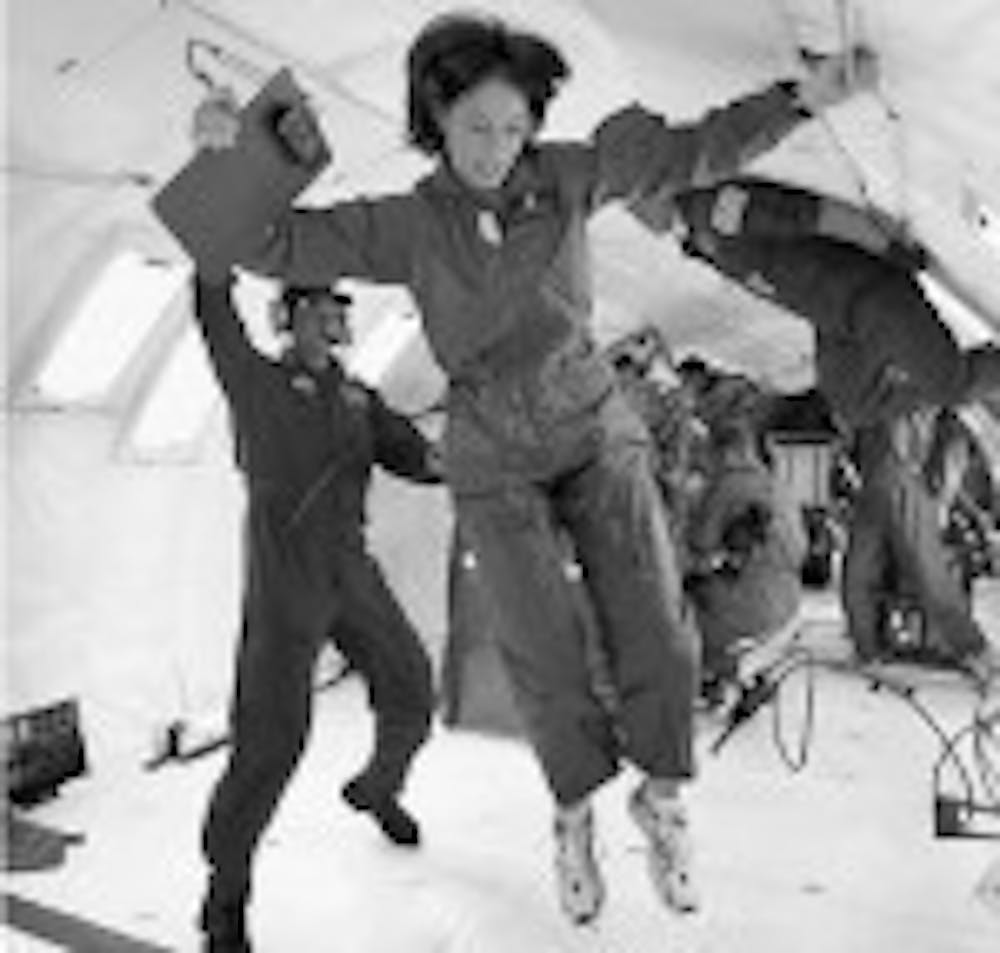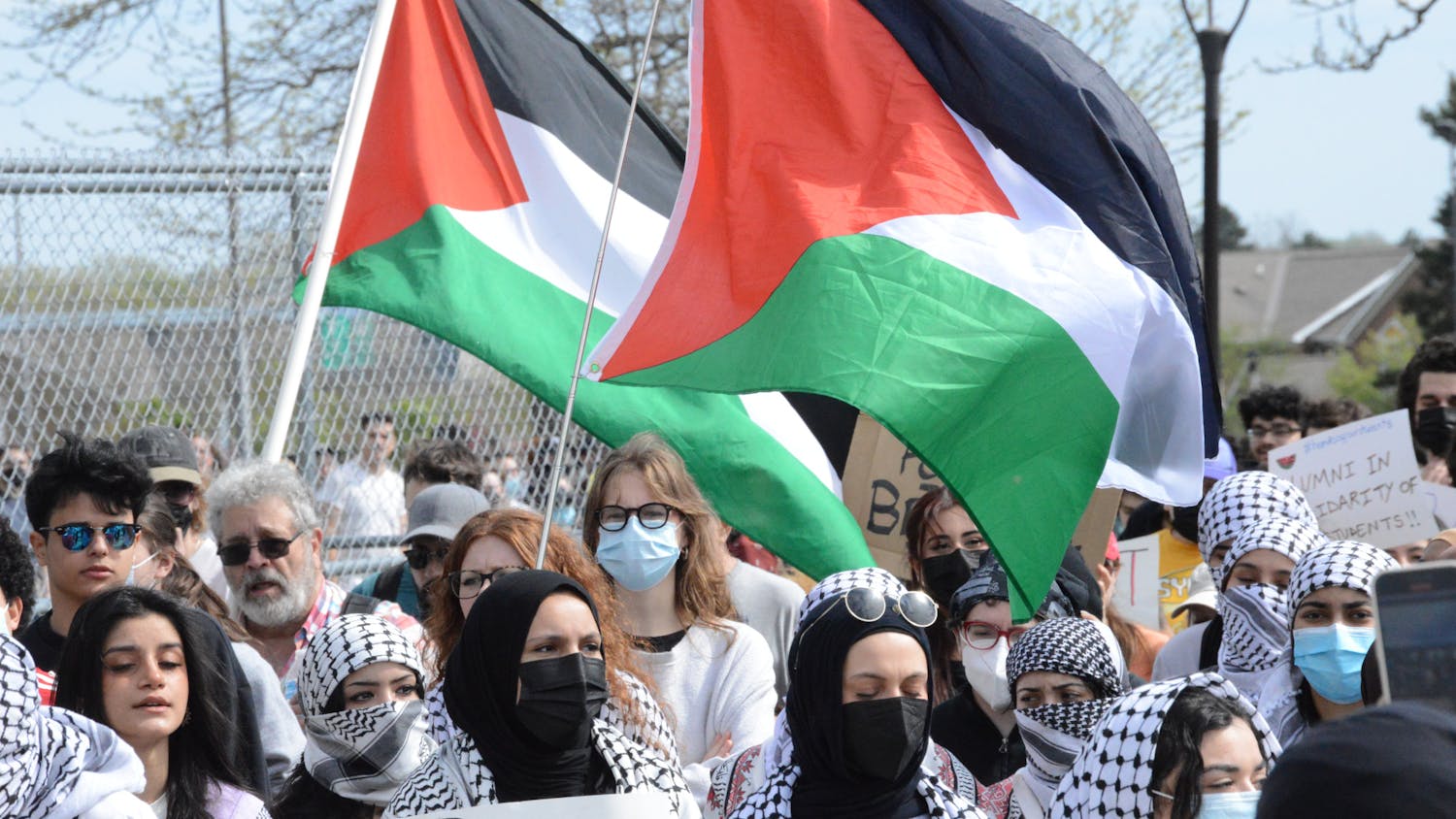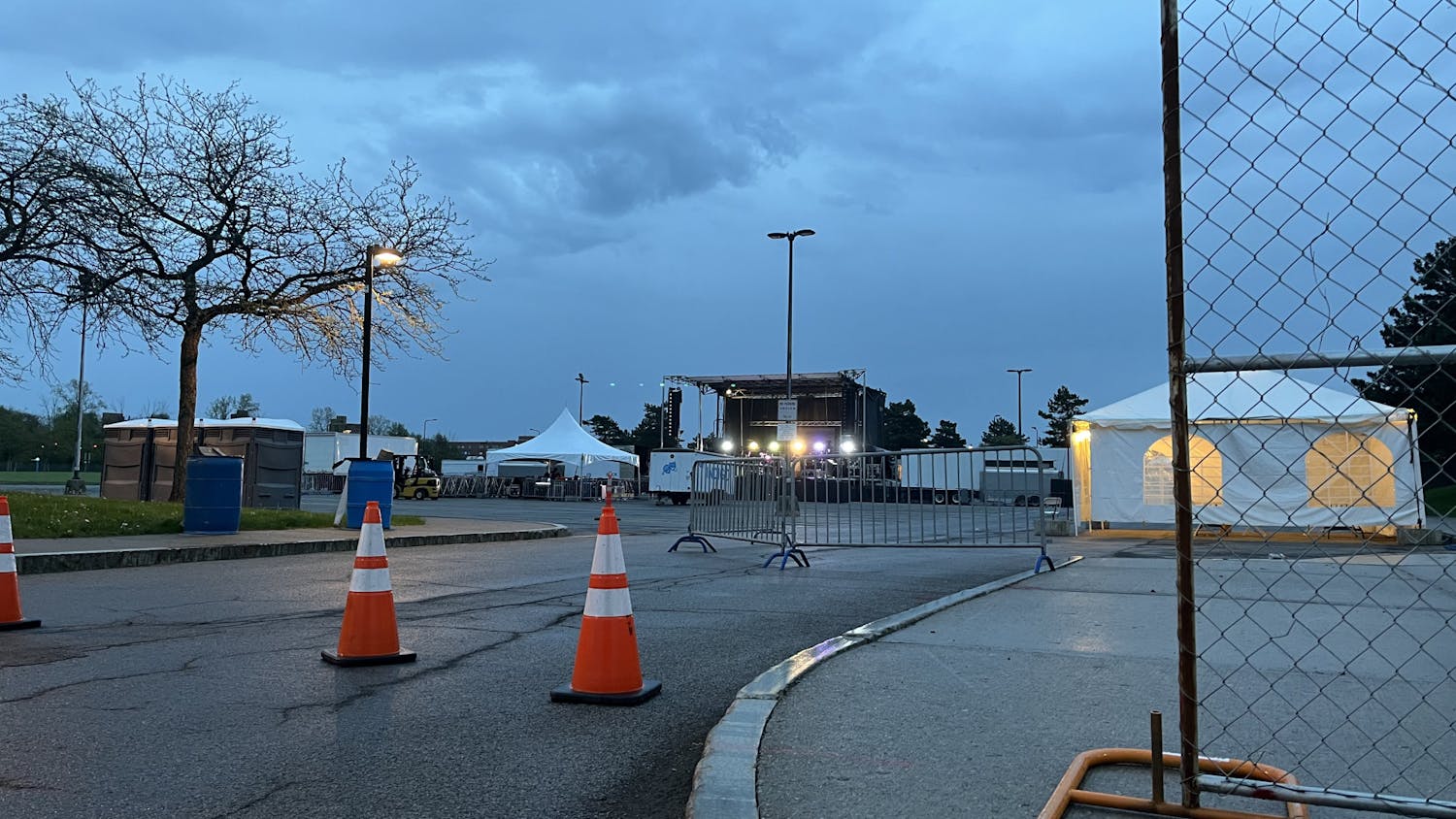An accepted proposal to conduct research on the effect of a micro-gravity environment on blood flow landed members of UB's chapter of the American Institute of Aeronautics and Astronautics at the Johnson Space Center in Houston, Texas, at NASA's mission control last summer, where the team hopes to return later this year.
"Seeing the building, seeing mission control - it was really exciting to see the people I could actually be working with," said team member Nicole Kulpit, a sophomore aerospace engineering major. "The experience was (a) once-in-a-lifetime ordeal, except for the fact that we are probably going back again next year, hopefully."
The four-member team was one of about fifty accepted into NASA's Reduced Gravity Student Flight Opportunities Program, based on a proposal submitted last October. The team conducted its research on July 18, 2002.
"It was a great experience to have, in terms of what kind of research is done in the professional field," said team member Nick Leone, a senior aerospace engineering major.
According to Project Coordinator Lindsay Volaski, a junior aerospace engineering major, the club decided to research a biomedical proposal because it had been brought up within UB's chapter of AIAA before, but never acted on.
Other members of the flight crew were Laurie Darling, who graduated from UB last year and is working full-time for mission control, and Dom DelRusso, who graduated from UB in 1989 and also works for NASA.
Originally, according to Volaski, the team submitted a proposal to test the effects of magnets on blood flow, but "NASA has a problem with promoting magnetic therapy."
Kulpit said NASA gave the team the option to either continue their research independent of NASA or submit a revised proposal.
Under the guidance of club advisor Cyrus Madnia, associate professor of mechanical and aeronautical engineering, the team researched and produced their proposal.
"It mostly relates to astronauts living in international space stations," said Volaski. "It gives us a better understanding of how the body responds to a micro-gravity environment."
The team hypothesized that blood flows differently through the body in a micro-gravity environment than on Earth because of the decreased pressure, which will decrease flow to the body's extremities and will not allow blood to pool in the lower extremities of the body, as it usually does.
"The results of this experiment are of great consequence to the space program, as well as to the field of science in general, because this type of research is new to the world of micro-gravity," the proposal states.
The team monitored blood flow and pulse rate using a Laser Doppler Flowmeter, which uses light waves to monitor capillary levels, and a portable wrist monitor to measure blood pressure. The meter was borrowed from UB's School of Medicine.
The research showed that blood flow decreased in a zero gravity environment and increased as the plane ascended because of the increased pressure.
Team members conducted the research as they traveled to an altitude of about 30,000 feet in a KC 135, or a revised Boeing 707 airplane. The plane climbs at a 45-degree angle before it freefalls for 10,000 feet, suspending gravity and causing the craft to float for about 25 seconds.
According to Volaski, it costs $7,000 per hour to operate the KC 135. Although the club was not responsible for this cost, team members were required to pay for the trip to Houston. Leone said that the total cost for the trip was about $4,500.
Volaski said that some of the money was raised through fund raising and the rest was gotten through club funding and $1,600 allottment from the Student Association Senate.
This year, the club is starting an engineering project on the effects of thermal coating on metallic objects and different properties
"Thermal coating is a new study for NASA, especially in zero gravity," stated Kulpit in an e-mail. "With people living in zero gravity in space, they have to learn to use their environment to their advantage."
According to Leone, flight weeks for this year's projects are available from February through April. Since he is graduating in May, he said he would like to get a flight week around spring break but would return to Houston over the summer if necessary.





